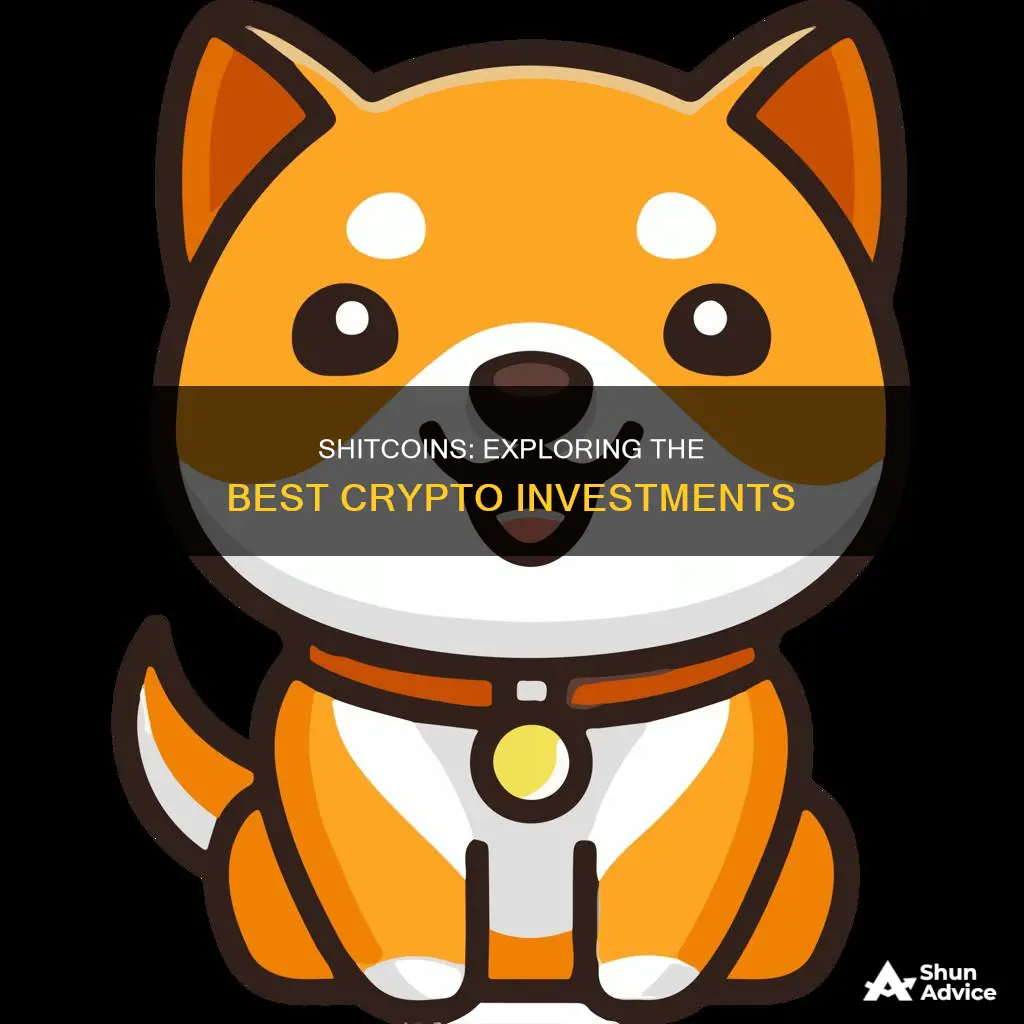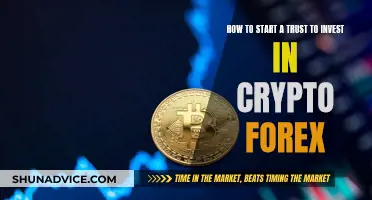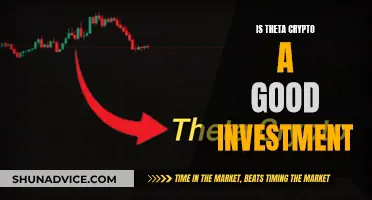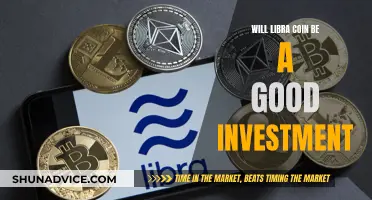
The term shitcoin is used to describe cryptocurrencies that serve no discernible purpose. While some shitcoins are copies of well-known coins, others are brand new projects. Despite the negative connotation of the term, some investors seek out these coins in hopes of turning a quick profit. However, shitcoins are generally terrible investments, requiring huge risks and rarely offering rewards.
Shitcoins are often characterised by a lack of real-world use cases, functioning like Ponzi schemes, having an infinite or extremely high supply, and exhibiting pump-and-dump behaviour.
Some well-known shitcoins include Dogecoin, Shibu Inu, and Safemoon.
For those interested in investing in shitcoins, it is important to conduct thorough research and understand the high risks involved.
| Characteristics | Values |
|---|---|
| No value | Negligible prices or market capitalization |
| No real-world use cases | N/A |
| Structured like Ponzi schemes | Redistribute money from new to old investors |
| High supply | Infinite or very high token supply |
| Low market capitalisation | N/A |
| Lack of a well-defined function | N/A |
| Lack of a whitepaper | N/A |
| Poorly written whitepaper | Low-quality English or numerous typos |
| Embellished whitepaper | Overuse of visuals |
| Initial coin offering red flags | Significant discount for early investors |
| No product, demo or code | N/A |
| Lack of team credentials and experience | N/A |
| Anonymous team | N/A |
What You'll Learn

How to identify a shitcoin
Shitcoins are cryptocurrencies with little to no value or good economic purpose for existing. They are created to be joke coins or pumped and dumped by their founders. Here are some ways to identify a shitcoin:
Lack of Value
The most common characteristic of a shitcoin is that it has little to no value. Their prices or market capitalization are negligible due to a lack of investor interest. This is usually because the developers do not have enough hype power and marketing resources to attract new investors, or the coin has already been pumped and dumped.
No Real-World Use Cases
Shitcoins may have good market capitalization and reasonable prices, but they often lack real-world use cases. While they may claim to be a payment currency, the world does not need another cryptocurrency for this purpose. Therefore, any new cryptocurrency that exists solely to be "yet another currency" is likely a shitcoin.
Structured like Ponzi Schemes
Many shitcoins function like Ponzi schemes, with their value dependent on new investors buying the coin. Their tokenomics are designed to redistribute money from new to old investors and make the founders rich. The system favours early investors who can take out their capital and profits before the hype dies down.
Infinite or High Supply
Shitcoins often have infinite or extremely high token supplies, sometimes in the billions, trillions, or even more. Because their prices are so low, people can buy billions of them with a small amount, which can be enticing to potential investors. However, this eventually leads to a heavy bag of worthless tokens as the value of the coin crashes.
Short-Term Price Rises and Falls
Shitcoins often experience short-term price rises, followed by sharp falls. This is due to investors wanting to capitalize on short-term gains. The price increases exponentially in a short period as investors start to buy in, and then experiences a free fall as investors sell their currencies.
Other Red Flags
- The white paper is a copy of another project, is overly technical, or doesn't exist.
- The developer team is anonymous or uses fake names and emojis.
- The project's website lacks originality, uses free domains, or offers vague benefits without specifying how they will be achieved.
- There is no clear work plan or defined goals for the project's future development.
- The cryptocurrency is a fork of another, usually Bitcoin, with minimal changes and no innovation.
The Ultimate Guide: Invest in Bitcoin Without Third Parties
You may want to see also

Shitcoin characteristics
Shitcoins are cryptocurrencies with little to no value or purpose. They are often created as jokes or meme coins, pumped and dumped by their founders, or used in Ponzi schemes. The term "shitcoin" is a pejorative term used to describe valueless altcoins or cryptocurrencies that were developed after Bitcoin became popular.
- Little to No Value: Shitcoins typically have negligible prices or market capitalization due to a lack of investor interest. This can be a result of insufficient hype power, marketing resources, or because the coin has already been pumped and dumped.
- No Real-World Use Cases: Many shitcoins claim to have legitimate use cases, such as being a payment currency, but the world does not need another cryptocurrency for payments. Any new cryptocurrency that exists solely to be another currency is considered a shitcoin.
- Ponzi Scheme Structure: Most shitcoins function like Ponzi schemes, relying on new investors to buy the coin. Their tokenomics are designed to redistribute money from new investors to old ones and enrich the founders.
- High Supply: Shitcoins often have infinite or extremely high token supplies, sometimes in the billions, trillions, or even infinite quantities. The low price of these tokens can encourage people to buy, giving them the feeling of owning a large number of tokens.
- Volatile Price Action: Shitcoins are known for their short-term exponential price increases, followed by sharp nosedives. This is caused by investors who pump the coin and then dump their holdings at critical price points to capitalize on short-term gains.
- Lack of Development and Updates: Developers of shitcoins often abandon projects or move on to new ones, leaving little to no development efforts or updates. This can lead to the slow death of the project.
- Scam Potential: Some shitcoins are outright scams designed to steal your money. These may appear in your wallet out of nowhere, with high values, but you won't be able to sell or transfer them.
- Unrealistic Promises: Shitcoins often make unrealistic promises of high returns or quick money, similar to Ponzi schemes. They may offer high staking rewards without explaining how these rewards are generated or if they are sustainable.
- Speculative Nature: The value of shitcoins is based purely on speculation, as they have limited practical use. Their prices fluctuate based on investor sentiment rather than any fundamental value or utility.
- Short-Lived Success: While some shitcoins like Dogecoin have managed to sustain their popularity over the years, most lack the staying power to maintain their value or continue their price increases.
It is important to note that the term "shitcoin" is subjective, and different people may have varying opinions on which cryptocurrencies fall into this category.
Bitcoin's Future: A Viable Investment?
You may want to see also

Why you shouldn't invest in shitcoins
While there are many cryptocurrencies in the market that are labelled as 'shitcoins', investing in them is not a good idea. Here are some reasons why you should avoid investing in shitcoins:
Gambling, Not Investing
When you put your money into shitcoins, you are essentially gambling. The chances of losing your money are much higher than any potential profit you could make. It's important to remember that investing in cryptocurrencies is already a risky endeavour, and shitcoins amplify those risks significantly.
The Game is Rigged
The developers of shitcoins have often already secured a nice profit for themselves before listing the coin. They have the power to pump and dump the coin, manipulating the market to their advantage. As an investor, you are at their mercy, and the odds are stacked against you.
Funding Scams and Harming Crypto's Image
By investing in shitcoins, you are inadvertently funding scams and giving cryptocurrency a bad name. The creators of these coins know that many people are willing to risk a small amount of money on them, and they exploit this to keep creating new shitcoins to scam people. This gives regulators more reasons to crack down on cryptocurrency and impose restrictive rules, delaying its mass adoption.
No Real-World Use Cases
Shitcoins often have no legitimate use cases or practical applications. While they may claim to be a payment currency, the world does not need yet another cryptocurrency for payments. A cryptocurrency that is not solving a real problem or fulfilling a genuine need is unlikely to have long-term value.
Structured Like Ponzi Schemes
Most shitcoins function like Ponzi schemes, where the value is dependent on new investors buying in. Their tokenomics are designed to redistribute money from new investors to old ones and make the founders rich. The system favours those who get in early and exit with profits before the hype dies down.
Infinite or Insanely High Supply
Shitcoins often have infinite or extremely high token supplies, with totals in the billions, trillions, or even higher. The low price of these tokens can be enticing, as it makes people feel good about having a large number of tokens in their wallets. However, this high supply contributes to the coin's lack of value, and investors are eventually left holding worthless tokens.
A Beginner's Guide: Investing in Bitcoin with Luno
You may want to see also

Well-known shitcoins
While the term "shitcoin" is often used to describe cryptocurrencies that serve no purpose and have no value, it is ultimately a subjective label. Here are some of the more well-known shitcoins in the cryptocurrency market:
- Dogecoin (DOGE): A meme-based cryptocurrency created as a joke, with its success largely attributed to influencer encouragement and hype. Dogecoin has unlimited supply and no real-world use case.
- Shiba Inu (SHIB): Following Dogecoin's success, SHIB was named after the Shiba Inu dog breed and has no purpose or association with any blockchain or decentralised application. The maximum supply of tokens is set at 1 quadrillion.
- Safemoon (SAFEMOON): A Ponzi-inspired coin that charges holders a fee when they sell, which is then distributed to other holders as a reward. Safemoon also has a maximum supply of 1 quadrillion tokens.
- Ripple (XRP): While the Ripple technology is used by banks for international remittances, the XRP coin itself is not required for these transactions. As such, XRP is considered a shitcoin by some, created by Ripple to fund their company.
- Litecoin (LTC): Often referred to as the "silver of crypto," Litecoin is a clone of Bitcoin with a shorter block time and slightly larger supply. It has no real purpose and is expected to be replaced by more valuable and programmable ideas over time.
- Populous (PPT): Once a favourite of the author's friend, Populous managed to reach $80 per coin during the last bull run but has since traded below $1, never surpassing $1.43 again. It is considered one of the worst picks and a true shitcoin.
- IOTA: The author expresses disappointment with IOTA but does not provide specific details.
- Bitcoin Cash (BCH): Backed by notorious crypto huckster Craig Wright, also known as Faketoshi, Bitcoin Cash is considered a shitcoin by the author due to the dubious nature of its creator.
- Salt (SALT): Salt looked to create peer-to-peer loans but has been outperformed by more creative financial platforms like Compound and Uniswap. It is currently trading at 43 cents, a far cry from its high of $16.
- Waves: Waves promised to be an Ethereum alternative but failed to gain traction. It hit a high of $16.96 in 2018 and has since traded below that, with a current high of $13.
- PIVX: PIVX is considered a loser by the author, despite having a vibrant and welcoming community. The project never really executed on its promises and fell short of becoming a strong contender.
- Storiqa (STQ) and Money Token (IMT): These are mentioned as examples of shitcoins that are now technically dead, with investors likely needing to forget about their money or cut their losses.
It is important to note that the classification of a cryptocurrency as a shitcoin can be subjective, and there may be differing opinions on whether a particular coin qualifies as a shitcoin.
The Rise of Bitcoin: Why People Invested
You may want to see also

Shitcoin investment strategies
Shitcoins are highly volatile cryptocurrencies with little to no value, and investing in them is akin to gambling. They are often created hastily, lack a solid technological foundation, and are associated with dubious projects or intentions. However, some investors are attracted to shitcoins due to the potential for rapid price movements and the allure of quick profits.
If you are considering investing in shitcoins, here are some strategies to help guide your decision-making process:
Conduct Thorough Research
Before investing in any shitcoin, it is crucial to conduct extensive research to assess its viability. Read the project's white paper to understand its objectives, technology, and potential applications. Evaluate the development team's track record and experience, and look for previous successful projects they have been involved in.
Allocate a Reasonable Percentage of Your Portfolio
Shitcoin investing is highly speculative, so it is prudent to allocate only a small percentage of your overall portfolio to these assets. By limiting your exposure, you can mitigate the risk of significant losses impacting your entire investment portfolio.
Diversify Your Investments
Diversification is essential when investing in shitcoins. Avoid putting all your funds into a single shitcoin, as this exposes you to specific risks associated with that coin. Spread your investment across multiple shitcoins to increase the likelihood of capturing potential gains and safeguard your portfolio against volatility and uncertainties.
Set Clear Sell Targets
Define specific selling points for each coin in your portfolio. For example, consider selling when a coin's value doubles or reaches a predetermined multiplier. This proactive approach allows you to secure profits and manage risks effectively, helping you to capitalise on potential gains while navigating market fluctuations confidently.
Avoid Holding Onto Shitcoins for Too Long
Don't fall into the trap of holding onto shitcoins for too long, waiting for excessive gains. Set realistic profit targets and stick to them. By selling when profits reach a predetermined level, you can lock in gains and reduce the risk of losing them in market downturns.
Reinvest Profits into Safer Alternatives
As you navigate the volatile world of shitcoin investing, consider reinvesting your profits into more stable and secure investments. This strategy helps to diversify your portfolio and reduce overall risk exposure, safeguarding your initial capital while potentially benefiting from the growth of safer assets.
Stay Informed and Monitor Your Investments
Keep yourself informed about price movements, market trends, and any news or developments that could impact the value of your shitcoins. Consider joining relevant online communities and forums where updates and discussions about shitcoins frequently occur. Regularly review your investment portfolio to assess performance and make adjustments as needed.
Withdraw Your Coins to a Personal Wallet
When you are ready to withdraw your shitcoins, transfer them to your personal cryptocurrency wallet. This step reduces the risk of losing your coins due to potential exchange vulnerabilities, such as hacks or platform failures. Regularly back up your wallet and keep it updated with the latest security measures to protect your investment.
Formulate a Plan and Stick to It
Have a clear plan for investing in shitcoins and stick to it. Decide how much you are willing to invest, set profit targets, and determine when you will take profits. It is crucial to maintain discipline and avoid making impulsive decisions driven by fear or greed.
Be Wary of Scams
The shitcoin market is rife with scams and honeypot schemes, so be extremely cautious. Do your due diligence, research the project thoroughly, and be prepared to lose your entire investment. If something seems too good to be true, it probably is.
In conclusion, investing in shitcoins is a highly speculative endeavour with significant risks. While some investors may thrive, others may encounter substantial financial losses. It is crucial to approach shitcoin investing with prudence, conducting comprehensive research, and implementing disciplined risk management practices.
The Ultimate Guide to Bitcoin Investing
You may want to see also
Frequently asked questions
Shitcoins are cryptocurrencies that serve no discernible purpose and hold no real value. They are usually created to be meme (joke) coins or to be pumped and dumped by their founders.
Dogecoin (DOGE), Shiba Inu (SHIB), and Safemoon (SAFEMOON) are some well-known shitcoins. Dogecoin, for instance, was created as a joke based on a popular internet meme and has no real utility.
Shitcoins typically have a low market capitalization, lack a well-defined function or use case, and follow a pump-and-dump scheme where early investors benefit at the expense of later ones. They often have poor whitepapers with vague or unrealistic promises, and their development teams may be anonymous or have a history of failed projects.







